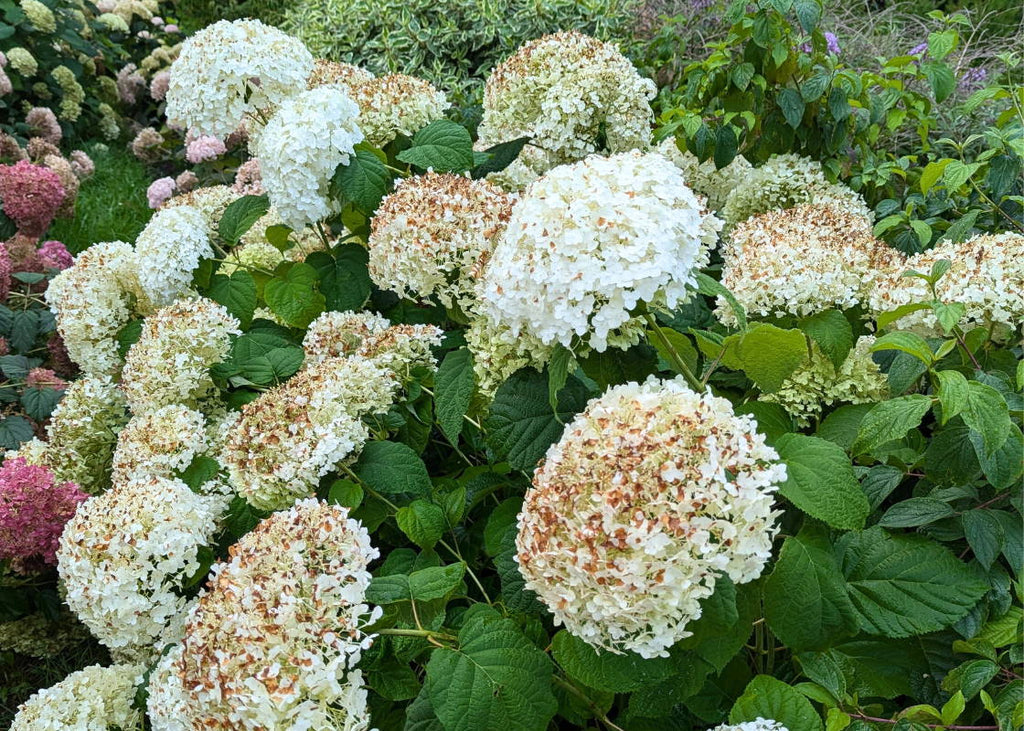Why Are My Hydrangeas Turning Brown?

While brown hydrangea flowers are welcome in the fall, they can be a troublesome burden during the summer when pink, blue, and green hues are supposed to be taking center stage. Common culprits for browning hydrangea flowers include overwatering, overfertilizing, and too much sunlight. But how can you tell exactly which of these common problems is causing it? Here, we'll dive into potential reasons why your hydrangeas are turning brown, as well as solutions to bring these beautiful blooms back to life.
3 Potential Reasons Why Your Hydrangeas Are Turning Brown:
Your Hydrangeas Are Thirsty, Or Overwatered
Browning hydrangea flowers could be a sign that your shrubs are either receiving too much or not enough, water. If the browning appears to coincide with soggy soil, then it is likely an overwatering issue. However, if the browning coincides with leaf drop, it is likely an indication of underwatering. Assuming that hydrangeas are receiving the correct amount of water, the browning could be the result of one of the other factors listed below.
Your Hydrangeas Are Receiving Too Much Sunlight
Leaf scorch during hot and sunny summer days could be the reason that your hydrangeas are turning brown. This presents with scorching flowers and curling leaves. Remember, hydrangeas prefer to grow in areas with morning sun and afternoon shade. Therefore, consider transplanting them in the following spring to a different location with less sun. If your garden lacks afternoon shade, consider planting more sun-loving hydrangea types, such as panicle hydrangea (Hydrangea paniculata), which are the most tolerant of afternoon sun.
Your Hydrangeas Are Overfertilized
Overfertilizing hydrangeas or fertilizing them too often can cause "fertilizer burn," which presents as yellowing or browning leaves. This is because when too much fertilizer is added, it causes a buildup of salt in the soil, allowing the hydrangea to prioritize the growth of foliage and stems, thereby diverting growth away from the flowers. Instead, focus on fertilizing once in early spring with a Espoma Flower-tone organic fertilizer and apply again only in late spring/early summer if necessary.
